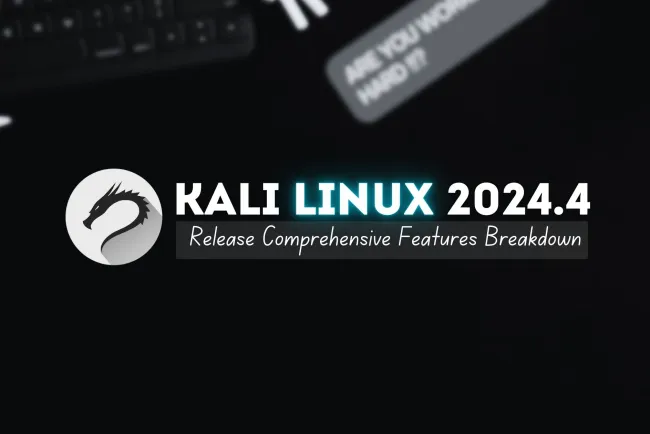What are the most useful Linux system administration commands and how do they work?
Linux system administration relies heavily on command-line tools that help monitor, manage, and troubleshoot servers. This guide offers an overview of the most commonly used Linux commands for system admins—covering everything from user management and file permissions to process monitoring and system updates. Mastering these commands boosts efficiency, enhances security, and is essential for managing any Linux-based system in a professional environment.

Table of Contents
- Why Linux Command-Line Skills Are Essential for System Administrators?
- User Management Commands
- File and Directory Management
- Disk and Filesystem Management
- Package Management (Ubuntu/Debian & RHEL/CentOS)
- Service and Process Management
- Networking and Firewall
- System Monitoring and Logging
- Scheduled Tasks and Cron Jobs
- Permission and Ownership
- System Updates and Reboots
- User Sessions and Login Tracking
- Linux Commands Summary
- Conclusion
- Frequently Asked Questions (FAQs)
System administration in Linux is all about managing and maintaining the operating system efficiently using command-line tools. Whether you’re handling user management, disk storage, networking, or system monitoring, Linux provides powerful and flexible commands to get the job done. This blog offers a complete overview of essential Linux commands used by system administrators, complete with usage examples and real-world relevance.
Why Linux Command-Line Skills Are Essential for System Administrators?
Unlike graphical interfaces, the Linux command-line interface (CLI) provides deeper control, scripting capabilities, and automation for administrative tasks. For server management, performance monitoring, and troubleshooting, the terminal is irreplaceable. Proficiency with these commands is essential for configuring secure, optimized, and reliable systems.
User Management Commands
1. useradd, usermod, userdel
-
useradd– Creates a new user. -
usermod– Modifies an existing user. -
userdel– Deletes a user account.
Example:
sudo useradd johndoe
sudo usermod -aG sudo johndoe
sudo userdel johndoe
2. passwd
Used to set or change user passwords.
Example:
sudo passwd johndoe
File and Directory Management
3. ls, cd, pwd, mkdir, rmdir, rm, cp, mv
These basic commands help navigate and manipulate the file system.
-
ls– List directory contents -
cd– Change directory -
pwd– Show current path -
mkdir– Create directory -
rm– Delete files -
cp– Copy files or directories -
mv– Move/rename files
Example:
cd /var/log
mkdir backup
cp syslog backup/
rm oldlog
Disk and Filesystem Management
4. df, du, mount, umount, fdisk, lsblk
-
df– Disk space usage -
du– Directory space usage -
mount– Mount file systems -
umount– Unmount file systems -
fdisk– Partition disks -
lsblk– List block devices
Example:
df -h
du -sh /home
mount /dev/sdb1 /mnt/usb
Package Management (Ubuntu/Debian & RHEL/CentOS)
5. apt, yum, dnf, zypper
-
apt– Debian/Ubuntu package manager -
yum/dnf– Red Hat and CentOS package manager -
zypper– openSUSE package manager
Example (Ubuntu):
sudo apt update
sudo apt install nginx
Example (CentOS):
sudo yum update
sudo yum install httpd
Service and Process Management
6. systemctl, service, ps, top, kill, htop
-
systemctl– Manage systemd services -
ps– Show current processes -
top– Real-time process monitor -
kill– Terminate processes -
htop– Interactive process viewer
Example:
systemctl restart ssh
ps aux | grep nginx
kill -9 1234
Networking and Firewall
7. ip, ifconfig, ping, netstat, ss, ufw, iptables
-
ip– Modern tool for IP configuration -
ping– Test network connectivity -
netstat/ss– Network sockets -
ufw– Firewall configuration (Ubuntu) -
iptables– Advanced firewall rules
Example:
ip a
ping google.com
sudo ufw allow 22/tcp
System Monitoring and Logging
8. uptime, vmstat, iostat, free, dmesg, journalctl
-
uptime– System run time -
vmstat– System performance -
free– Memory usage -
dmesg– Kernel logs -
journalctl– Systemd journal logs
Example:
uptime
free -m
journalctl -xeScheduled Tasks and Cron Jobs
9. crontab, at
-
crontab– Schedule recurring tasks -
at– Schedule one-time tasks
Example:
crontab -e
# Add: 0 2 * * * /usr/local/bin/backup.sh
Permission and Ownership
10. chmod, chown, chgrp, umask
-
chmod– Change file permissions -
chown– Change ownership -
chgrp– Change group -
umask– Default permission mask
Example:
chmod 755 script.sh
chown root:admin script.sh
System Updates and Reboots
11. reboot, shutdown, uptime, hostnamectl
-
reboot– Restart system -
shutdown– Power off -
hostnamectl– View/change system hostname
Example:
sudo shutdown -h now
hostnamectl set-hostname webserver01
User Sessions and Login Tracking
12. who, w, last, id
-
who– Logged-in users -
w– User sessions with activity -
last– Login history -
id– Show user ID and groups
Example:
who
last -x
Linux Commands Summary
| Category | Common Commands | Purpose |
|---|---|---|
| User Management | useradd, passwd, usermod |
Create/modify/delete users |
| Files & Directories | ls, cd, cp, rm, mkdir |
Navigate and manage file systems |
| Package Management | apt, yum, dnf, zypper |
Install/update/remove software |
| System Monitoring | top, free, vmstat, uptime |
Monitor performance and resources |
| Networking | ip, ping, netstat, ss, ufw |
Configure and diagnose network |
| Services & Processes | systemctl, ps, kill, htop |
Manage services and running tasks |
| File Permissions | chmod, chown, umask |
Set ownership and access |
| Logs and Errors | dmesg, journalctl, tail /var/log/syslog |
View and troubleshoot logs |
| Scheduling Tasks | crontab, at |
Automate system tasks |
| Shutdown/Reboot | reboot, shutdown, hostnamectl |
Power management |
Conclusion
Mastering these Linux system administration commands is fundamental for maintaining a secure, optimized, and reliable environment. These tools allow administrators to automate tasks, respond to incidents, enforce system policies, and ensure uptime. Whether you're preparing for the RHCSA exam or managing production servers, these commands form the core of your administrative toolkit.
FAQs
What is the purpose of the top command in Linux?
The top command displays real-time system information including running processes, CPU usage, memory usage, and uptime.
How do I manage users in Linux using commands?
You can use commands like adduser, usermod, passwd, and deluser to add, modify, and delete user accounts.
What does the df -h command do?
df -h shows disk space usage in a human-readable format, allowing system admins to monitor storage.
How do I change file permissions in Linux?
Use the chmod command to modify permissions and chown to change file ownership.
What is the difference between su and sudo?
su switches to another user (usually root), while sudo runs a single command with elevated privileges.
Which command is used to update software packages in Linux?
Depending on the distro, use apt update && apt upgrade (Debian/Ubuntu) or yum update (RHEL/CentOS).
How do I check memory usage in Linux?
Use the free -h command to see memory usage stats in a human-readable format.
What command is used to monitor system logs?
tail -f /var/log/syslog or journalctl -f allows live monitoring of system logs.
How do I schedule tasks in Linux?
Use crontab -e to edit scheduled tasks and automate scripts using cron jobs.
What does the ps aux command show?
It lists all running processes along with user information, CPU, and memory usage.
How can I find files in Linux using the command line?
The find command helps locate files by name, type, modification time, and more.
What is the use of the netstat command?
netstat displays network connections, routing tables, and interface statistics.
How do I restart a service in Linux?
Use systemctl restart service-name or service service-name restart.
What command shows system uptime?
Use the uptime command to view how long the system has been running.
How do I check network configuration?
Use ifconfig or ip addr to view and configure network interfaces.
Which command is used to install software packages?
Use apt install package-name for Debian-based and yum install package-name for RedHat-based systems.
How do I see all users on a Linux system?
Use the cat /etc/passwd command to list all user accounts.
What is the command to shutdown a Linux system?
Use shutdown now or poweroff to immediately power down the system.
What does the hostnamectl command do?
It displays or sets the system hostname and related metadata.
How do I see running services in Linux?
Use systemctl list-units --type=service to see the status of all active services.
What is the use of the ls command?
ls lists directory contents; use options like -l for details and -a for hidden files.
How do I copy files in Linux?
Use the cp source destination command to copy files and directories.
What does the tar command do?
tar is used to archive files and extract tarballs, especially for backups.
How do I kill a running process in Linux?
Use kill PID or kill -9 PID to forcefully terminate a process.
How can I monitor disk I/O?
The iostat command (from the sysstat package) helps track disk I/O performance.
What does whoami show?
It prints the current effective username.
How do I enable or disable a service at boot?
Use systemctl enable service-name or disable to manage autostart behavior.
What is the alias command used for?
alias creates shortcuts for commands to simplify usage (e.g., alias ll='ls -la').
How do I extract a .gz file?
Use gunzip filename.gz or gzip -d filename.gz.
How do I create symbolic links in Linux?
Use ln -s target link-name to create a symbolic (soft) link.














![Top 10 Ethical Hackers in the World [2025]](https://www.webasha.com/blog/uploads/images/202408/image_100x75_66c2f983c207b.webp)








